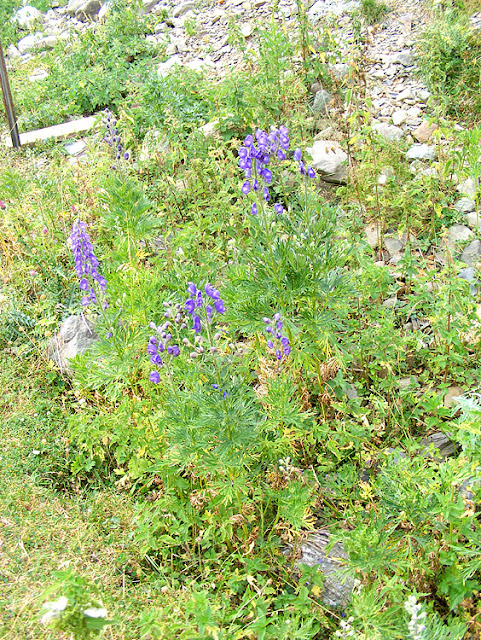Monkshood Aconitum napellus (Fr. Aconit napel) is a plant you will encounter wild at high elevations in the Pyrénées in many locations in late summer. You may also have grown it in your garden or received it in a floral arrangement.
It's a lovely plant, but one to be wary of. All parts of the plant contain a toxin which is very easily absorbed through the skin, so it is inadvisable to touch it unless gloved up, and be careful not to brush against it even. The toxin causes nerve damage, starting with numbness at the point of contact, and can lead to multiple organ failure and death. Tradtionally it was used to poison wolves.
I photographed these Monkshood plants on the Col de Tentes, near Gavarnie in the Hautes-Pyrénées in July.




6 comments:
We have a garden full!! Will have to take care. Elizabeth has split them and moved them about and is fine. Will look up the garden version in the RHS manual.
RHS lists Aconitum napellus and no mention of this being poisonous. Also NO mention in our wild flower books...??
Colin: The garden are hybrids or varieties for cultivation, and I assume are less toxic. You do need to be careful (ie always wear gloves when handling) as they may have been responsible for at least one otherwise unexplained death in the last few years. I don't know why the wild flower guides don't list them as toxic (even Rose doesn't, I didn't check Stace or the big old bible by the guy with the Russian sounding name that I can never remember). They are well known as a toxic plant amongst botanists and many gardeners and florists are aware too. I don't think many people realise quite how toxic the wild species is though.
One thing Elizabeth looked up was talking about making a poison by brewing a drink with the roots which are supposed to be deadly... And don't eat them! Good to be aware of obviously and thanks for the warming... I'll be careful if Elizabeth offers me a new tea!!!
From my readings, I knew that Aconit was poisonous, but I had no idea how it looked! Lovely plant.
chm: You can see why people grow it in their gardens, can't you?!
Post a Comment